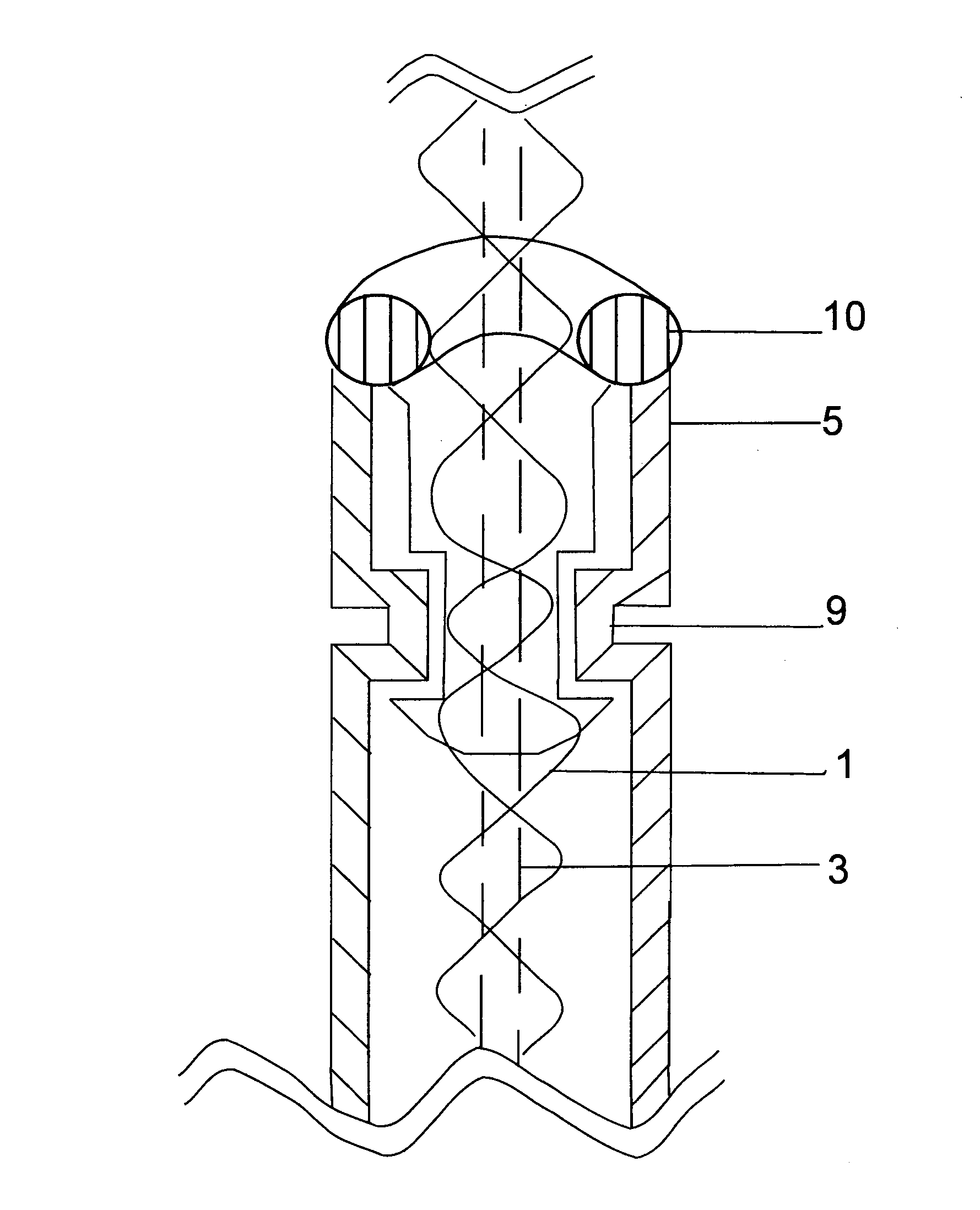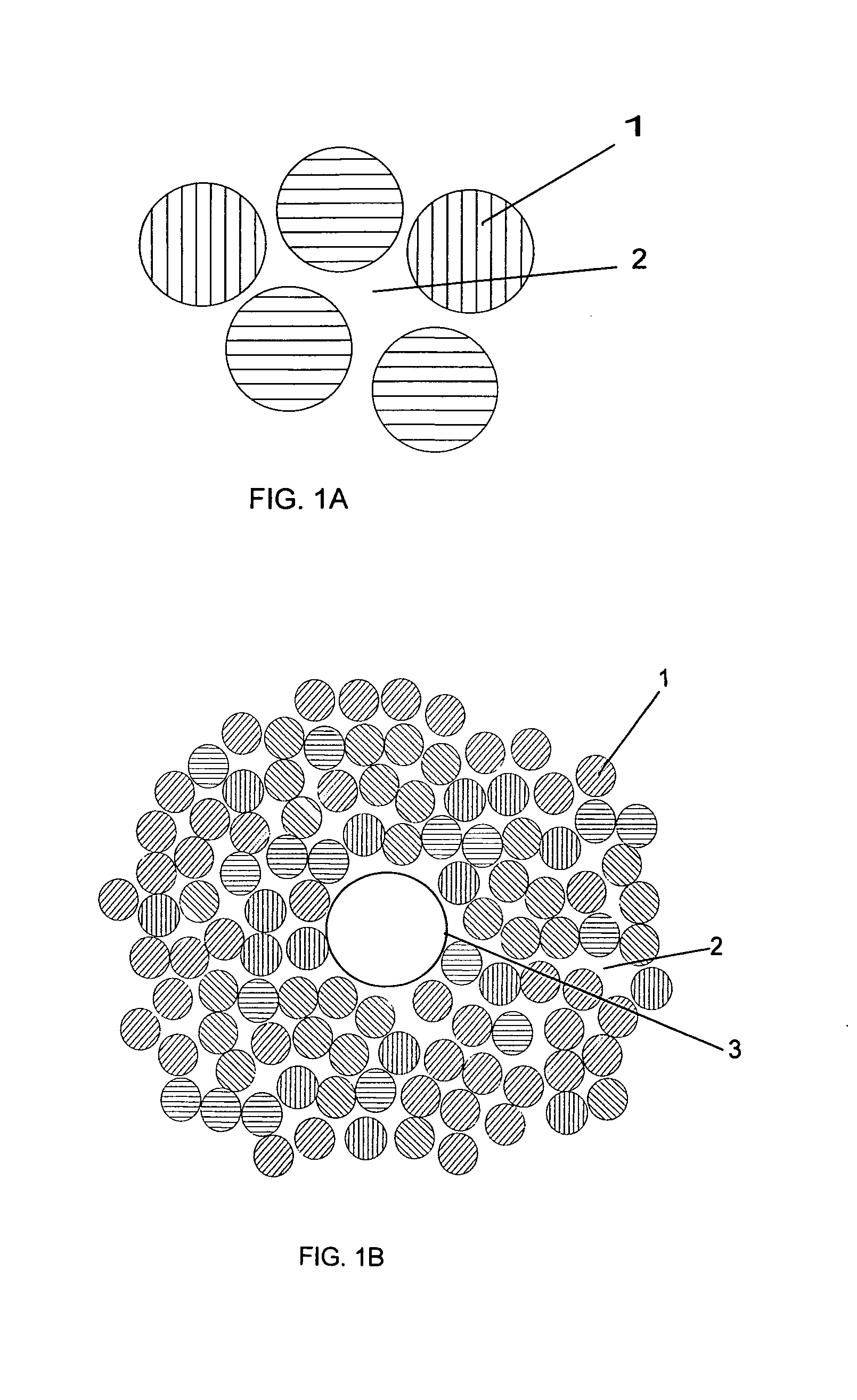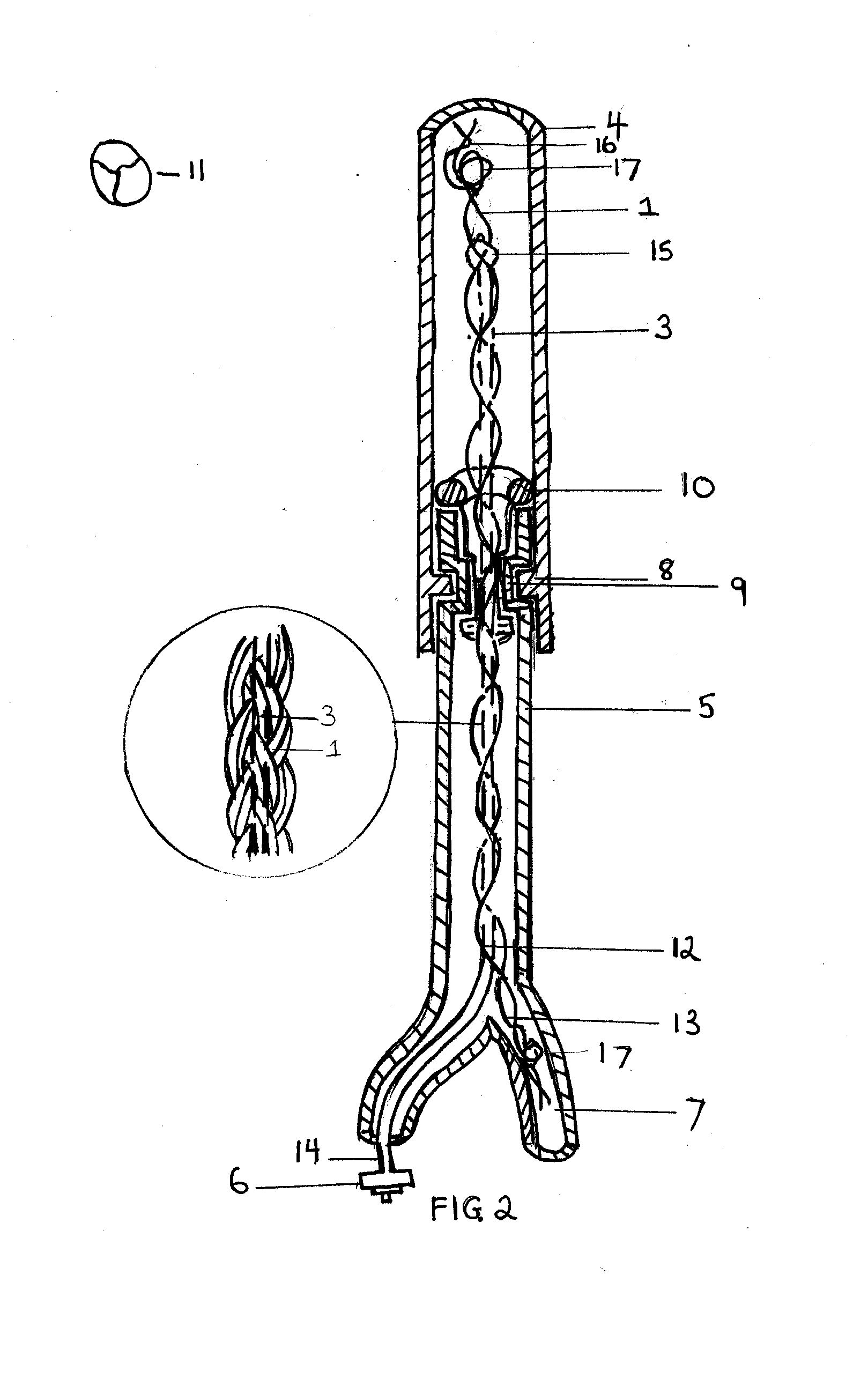Drainage Catheter
a catheter and draining technology, applied in the field of catheters, can solve the problems of inability to fully eliminate fluid from the bladder, particularly uncomfortable for patients with foley catheters, etc., and achieve the effects of improving patient comfort, improving catheter performance, and reducing infection risk
- Summary
- Abstract
- Description
- Claims
- Application Information
AI Technical Summary
Benefits of technology
Problems solved by technology
Method used
Image
Examples
Embodiment Construction
[0050]The terms proximal and distal refer to the position of the patient while the catheter is in use. Proximal refers to positions near the patient while distal refers to positions away from the patient.
[0051]As illustrated in FIG. 1A, an arrangement of fibers 1 creating channels 2 for movement of fluid. FIG. 1B shows how the arrangement of fibers braided together around a very fine tube of the inflation device 3. The inflation device may be of conventional construction and braided around with flexible fibers. The structure of fibers can vary in size and orientation so that fluid flow occurs. The essential element of the catheter is the flexible fibers formation of a plurality of channels to provide fluid movement.
[0052]The parts are manufactured from a biocompatible material to avoid excessive irritation to the body. The tube, flexible fibers, and inflation device can be constructed of natural rubber, latex, polyvinyl chloride, polyurethane, polytetrafluorethylene, silicone rubber...
PUM
 Login to View More
Login to View More Abstract
Description
Claims
Application Information
 Login to View More
Login to View More - R&D
- Intellectual Property
- Life Sciences
- Materials
- Tech Scout
- Unparalleled Data Quality
- Higher Quality Content
- 60% Fewer Hallucinations
Browse by: Latest US Patents, China's latest patents, Technical Efficacy Thesaurus, Application Domain, Technology Topic, Popular Technical Reports.
© 2025 PatSnap. All rights reserved.Legal|Privacy policy|Modern Slavery Act Transparency Statement|Sitemap|About US| Contact US: help@patsnap.com



